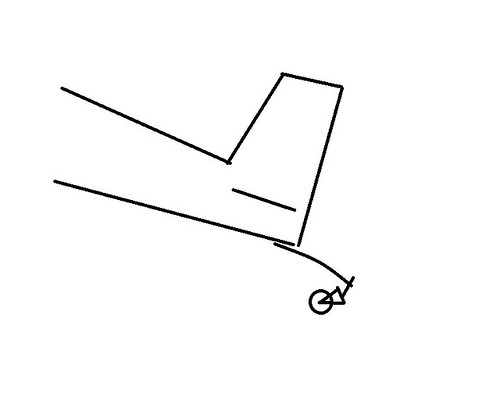When I first built a tailwheel for my tailskid-equipped aircraft, I followed the plans exactly and ended up with something like this:

The issue was that the tailspring had been built to different plans causing the angle of the tip of the tailspring to differ from that on my plans. This meant that the axis of the castor was canted slightly forwards (following it down) and the tailwheel 'liked' to sit backwards. i.e. by doing so, the tail dropped and its potential energy was minimised. Or to put it another way: that's what it looked like sitting around in the hangar.
What the assembly needed to look like was this:

Here, if you rotate the tailwheel by 180 degrees this lifts the tail by a centimetre or two. It doesn't like it, and returns to the original configuration with the tailwheel pointing backwards. This is what my final version of the tailwheel assembly looked like.
Being curious by nature, I tried pulling the aircraft about with the first tailwheel assembly. It was a complete disaster: at walking speed it would not follow a straight line. It was constantly trying to turn this way or that. But when you were taxiing it, at a speed just above walking speed it suddenly became quite docile. In fact, I went as far as fast-taxiing the aircraft and it was passable. Much better directional control than the tailskid which skittered all over the tarmac and was frankly dangerous.
There was one other way to get the wheel to behave, which was to push down somewhat on the tail. This depressed the tailspring sufficiently that the axis of the castor was now pointing backwards rather than forwards. The minimum-energy configuration is for the wheel to point backwards. The more pressure on the tailwheel, the more it wants to point backwards and the better the directional control. You could play with the elevator and clearly, holding the tail back did improve the ground handling.
I don't doubt that this is also the case for the 'correct configuration' tailwheel assembly, which behaves nicely enough anyway. I can certainly see the argument against doing this on rough surfaces, but on tarmac I can't see that it puts much extra stress on the airframe/tailwheel. However, somehow, even a free-castering tailwheel that wants to face back to front at rest, works hard to keep the nose of the aircraft pointing forwards at any significant speed.